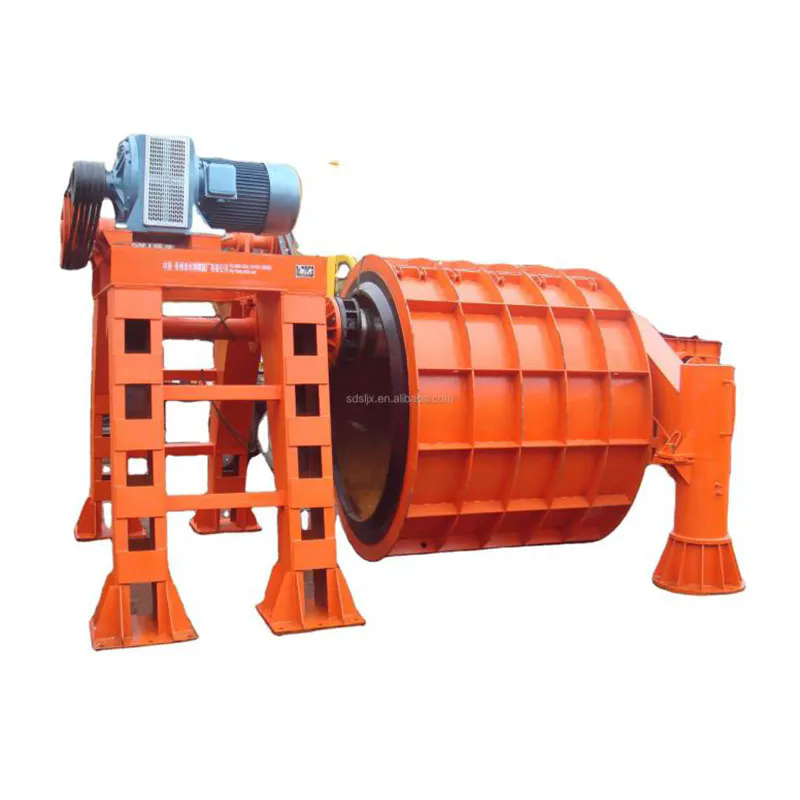Exploring the Culvert Pipe Making Machine: Revolutionizing Drainage Solutions
2024-09-30
In the world of civil engineering and infrastructure development, drainage systems play a crucial role in managing stormwater and preventing flooding. One of the key components in effective drainage systems is the culvert pipe. These pipes ensure that water can pass under roads, railways, or other obstructions without causing damage. The Culvert Pipe Making Machine has revolutionized the production of these essential structures, offering efficiency, precision, and durability.
In this blog, we'll dive into what a culvert pipe is, the importance of culvert pipe making machines, and how they are transforming the infrastructure industry.
What is a Culvert Pipe?
A culvert pipe is a structure that allows water to flow underneath a road, railway, or other transportation pathways. Typically made from materials like concrete, steel, or plastic, culvert pipes come in various sizes and shapes depending on the type of water flow and the location. They are designed to protect infrastructure by ensuring proper water drainage, especially during heavy rains or in flood-prone areas.
Culvert pipes are vital for:
- Water management: Preventing floods and water pooling
- Infrastructure protection: Supporting roadways and railways by allowing water to pass underneath safely
- Erosion control: Reducing soil erosion around foundations and embankments
The Role of Culvert Pipe Making Machines
The production of high-quality culvert pipes is no easy task, but with the advent of culvert pipe making machines, the process has become more efficient, accurate, and consistent. These machines are designed to manufacture pipes at a large scale while ensuring that they meet industry standards for durability and functionality.
Key Features of a Culvert Pipe Making Machine
1. High Production Speed: These machines can produce large quantities of culvert pipes in a relatively short amount of time, making them perfect for large-scale infrastructure projects.
2. Versatility: Culvert pipe making machines can be used to manufacture pipes in various sizes and shapes, including round, elliptical, and rectangular pipes, depending on the project requirements.
3. Precision and Consistency: These machines ensure that each pipe is made with precision, meeting exact specifications. This consistency reduces the chances of failure in the field, ensuring a longer lifespan for the pipes.
4. Material Compatibility: Most machines are designed to handle different materials, from concrete to steel and even plastic, allowing manufacturers to choose the best material for specific applications.
5. Automation: Advanced culvert pipe making machines often come with automation capabilities, reducing the need for manual labor and minimizing human error. This also improves safety during the production process.
How Culvert Pipe Making Machines Work
The working process of a culvert pipe making machine generally involves a few key steps:
1. Material Preparation
The first step involves preparing the raw material—whether concrete, steel, or plastic. For concrete pipes, the mixture of cement, water, and aggregate is precisely mixed to achieve the required strength. Steel or plastic pipes, on the other hand, use metal sheets or plastic polymers that are molded into the desired shape.
2. Molding and Forming
Once the material is prepared, it is poured or molded into the machine’s forms or dies. For concrete pipes, the material is poured into a cylindrical mold and then compressed using vibration or spinning to ensure even distribution and reduce air pockets.
3. Curing or Welding
In the case of concrete culvert pipes, the curing process is critical to ensuring that the pipe achieves its full strength. This may involve steam curing or other methods to accelerate the hardening process. Steel or plastic pipes may undergo welding or sealing processes to ensure that all joints are secure and watertight.
4. Finishing and Inspection
Once the culvert pipes are formed and cured or welded, they undergo finishing touches such as surface treatment or quality inspections. These inspections ensure that the pipes meet the required standards for strength, durability, and water resistance before being delivered to the project site.
Benefits of Using Culvert Pipe Making Machines
1. Cost-Effectiveness
By automating the production process, culvert pipe making machines reduce labor costs and increase production efficiency. This leads to lower overall costs for manufacturers and consumers alike.
2. High-Quality Output
With the precision that these machines offer, manufacturers can produce high-quality pipes that meet the stringent requirements for infrastructure projects. This reduces the likelihood of pipe failure, which can be costly and dangerous.
3. Environmental Impact
Many culvert pipe making machines use eco-friendly production methods, minimizing waste and energy consumption. Additionally, the ability to use durable materials like concrete and steel ensures that the pipes have a long lifespan, reducing the need for frequent replacements.
4. Adaptability to Various Projects
Whether for large highway drainage systems or smaller agricultural water management systems, culvert pipe making machines can produce pipes in various sizes and shapes, making them versatile for different applications.
Applications of Culvert Pipes
Culvert pipes are used in a wide variety of industries and settings. Some of the most common applications include:
- Road and Railway Drainage: Preventing flooding and water damage beneath roads and railways.
- Agricultural Water Management: Directing water flow in irrigation systems.
- Commercial and Residential Drainage: Used in stormwater management systems around buildings and developments.
- Erosion Control: Reducing soil erosion in areas prone to flooding or heavy rains.
Future Trends in Culvert Pipe Making Machines
The future of culvert pipe making machines is likely to focus on automation, sustainability, and customization. Manufacturers are continuously looking for ways to enhance the production process through smart technologies and innovative designs. With the increasing need for infrastructure development worldwide, the demand for efficient and sustainable culvert pipe production will continue to grow.
Automation
Machines are increasingly becoming more automated, which will lead to reduced reliance on manual labor, improved safety standards, and greater precision in the manufacturing process.
Sustainability
As environmental concerns become more prominent, manufacturers are likely to focus on using more sustainable materials and production techniques to reduce the carbon footprint of culvert pipe production.
Customization
With advancements in technology, culvert pipe making machines will become more adaptable, allowing manufacturers to produce pipes with custom designs and specifications for unique project needs.
Conclusion: The Importance of Culvert Pipe Making Machines in Modern Infrastructure
The culvert pipe making machine is a vital tool in modern infrastructure development, offering a solution for producing high-quality, durable culvert pipes that are essential for effective water management systems. From roads and railways to commercial and residential developments, these machines provide the efficiency, precision, and adaptability needed to meet the growing demands of global infrastructure projects.
As technology continues to evolve, we can expect even more innovative features in culvert pipe making machines, pushing the boundaries of what’s possible in infrastructure development and ensuring that our drainage systems remain reliable, cost-effective, and environmentally friendly.



